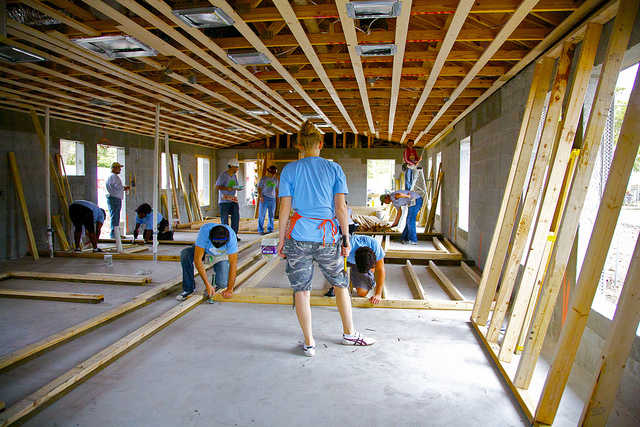Working with real estate, Kenny Slaught knows that one of the most important things needed to guarantee a human being development and well-being is having a place to call home. Unfortunately, there are nearly 100 million are homeless people around the world and at least 2 billion who live in slum housing. It does not matter if individuals were left homeless by natural disasters, war and civil unrest, being able to rely on or work with an organization such as Habitat for Humanity becomes a big deal for those who want to contribute to build a better world.
Habitat for Humanity works as a non-profit Christian housing organization dedicated to building or renovating simple, decent houses in partnership with those in need. They provide shelter and housing assistance to help these families who were hit by a disaster or are facing difficult housing situations. The organization was founded on the conviction that everyone should have a decent, safe, affordable place to live and is supported by thousands of volunteers every year. Regardless of race or religion, all volunteers and supporters are welcome.
How the Organization was born
Habitat for Humanity was born at Koinonia Farm in Americus, Georgia, a small, interracial, Christian community founded in 1942 by farmer and biblical scholar Clarence Jordan. The concept to start the organization was brought to Koinonia by the Fuller family in 1965, after they developed the idea of “partnership housing” according to which volunteers could work side by side to build simple and decent houses to those in need of adequate shelter.
In 1968, the first Habitat for Humanity great project was conceived and Koinonia laid out 42 half-acre house sites with four acres reserved as a community park and recreational area. The funds needed for the project were donated by people from around the country and so the construction could start and properties could be sold under a non-profit business model that didn’t force buyers to pay full interest for their new houses. This meant building costs would be financed by a revolving fund called “The Fund for Humanity” and the fund’s money would come from the new homeowners’ house payments, and the loans would be provided by supporters and money earned by fund-raising activities. This was how the basic model of Habitat for Humanity was begun.
In 1973, the Fullers decided to expand their initiative and apply the Fund for Humanity concept in other countries, especially those with the most critical after three years of hard work, they launched a successful house building program and returned to the United States to discuss the future of their dreams and start Habitat for Humanity International.
Since 1976, Habitat has helped 6.8 million people find strength, stability and independence through safe, decent and affordable shelter. Thousands of low-income families have been benefited through the organization, fighting against the housing crisis that affects most countries in the world.
Nowadays, with more than 1,400 local affiliates in the United States and more than 70 national organizations around the world, Habitat presents itself as an outstanding organization working for humankind. Their exemplary work takes place in different cities and Santa Barbara in not an exception.

Habitat for Humanity of Southern Santa Barbara County (SSBC)
Habitat for Humanity SSBC as other nonprofits in Santa Barbara is dedicated to eradicating poorly-built housing locally and worldwide. Their action plan included the construction, rehabilitation and preservation of homes, by working hard for fair and just housing policies; and by providing adequate training and access to resources to help families in need to improve their shelter conditions.
Habitat for Humanity SSBC works under the global organization policies, stating that every man, woman and child should have a simple, durable place to live in with dignity and safety. As a neuralgic matter, the organization in Santa Barbara claims that decent shelter in decent communities should be a matter of conscience and action for every member of the County.
The organization so far has completed three multi-home projects in Santa Barbara, most recently the Canon Perdido Affordable Homes project -a 12-home development on the east side of Santa Barbara. In addition, partners operate a Habitat ReStore in Goleta, which completes home repairs through the A Brush with Kindness program, and collaborates with other local non-profits.
SSBC Open Door Policy
Habitat for Humanity SSBC welcomes anyone interested in becoming a volunteer. All who believe that everyone needs a decent, affordable place to live, are welcomed to help with the work, no matter their race, religion, age, gender or political views, among other distinctions that usually divide people. The organization welcomes volunteers and supporters from all backgrounds and also serves people in need of decent housing regardless without trying to convert them to any type of faith or creed.
